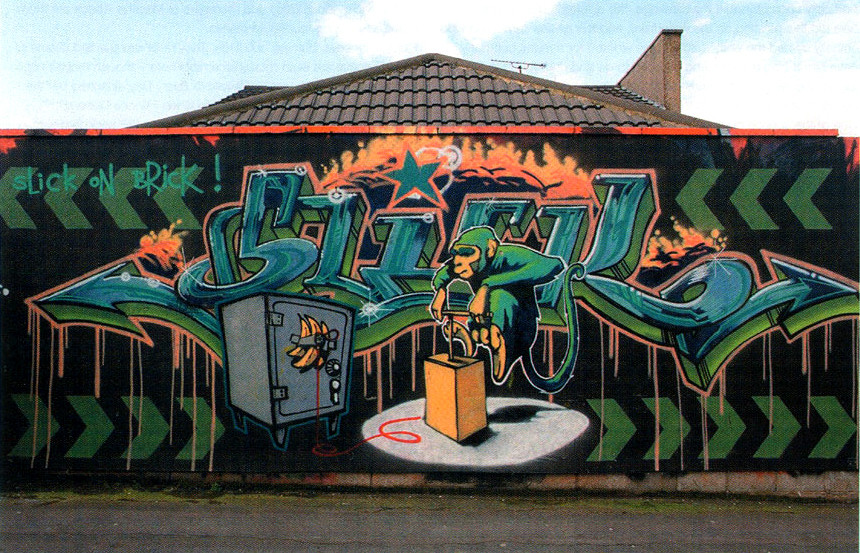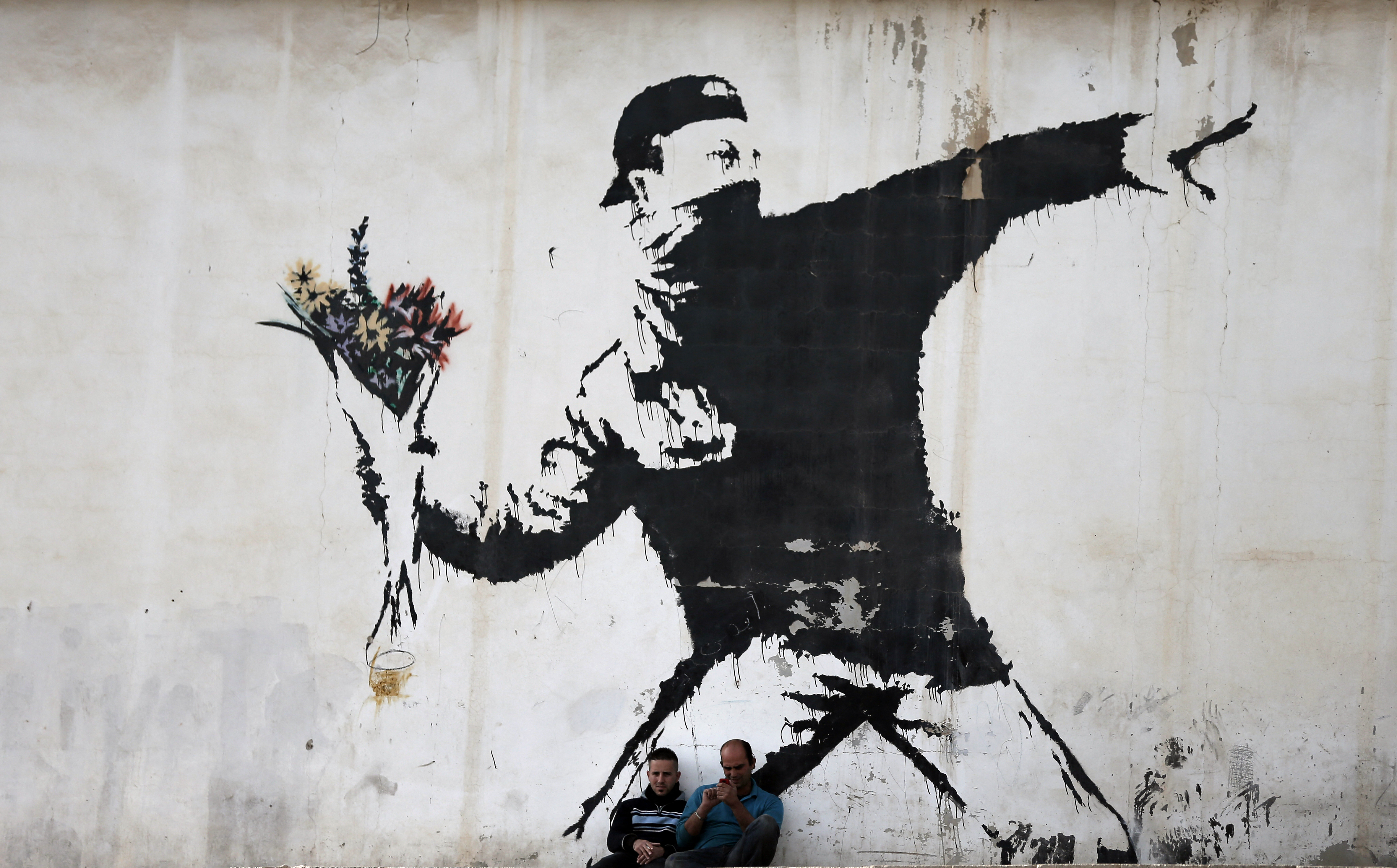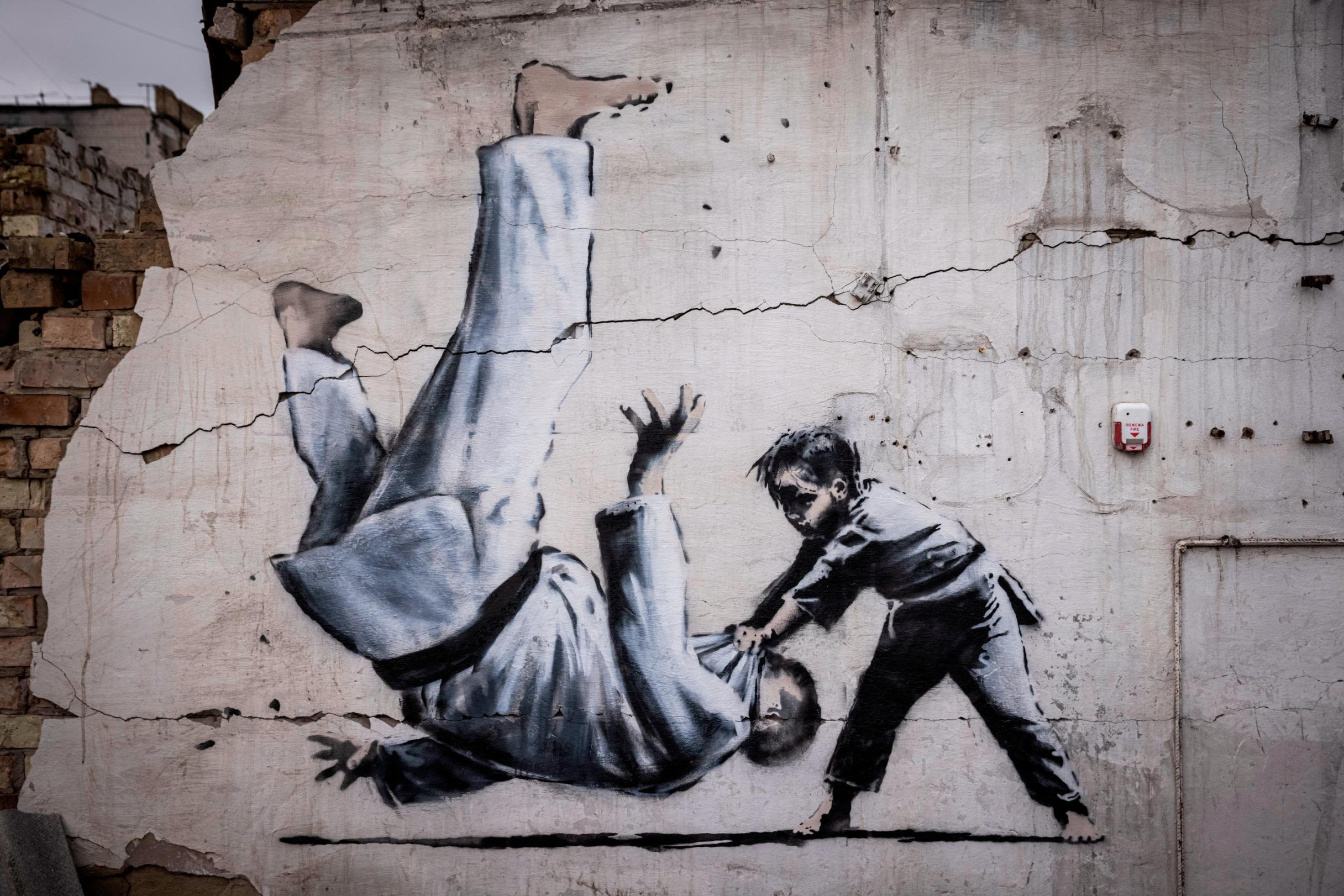Banksy’s artistic trajectory is one of the most fascinating in the contemporary art world. From his beginnings in the 1990s as a graffiti writer experimenting with complex letterforms and “wildstyle” tags, to his present-day status as a globally recognised social commentator whose work appears in war zones and galleries alike, Banksy has continually evolved both his style and message. This educational blog explores how his aesthetic and conceptual voice has transformed over time—from underground graffiti subculture to poignant political murals in Ukraine—while maintaining a consistent commitment to accessibility, subversion, and public space.
The Early Years: Wildstyle Roots and the Graffiti Underground (Early to Mid-1990s)
Banksy's earliest works emerged from the vibrant and rebellious graffiti scene in Bristol during the early 1990s. He was initially part of a crew called the DryBreadZ (DBZ), and his early output focused heavily on traditional graffiti techniques—particularly *wildstyle*. This is a complex, interlocking letterform style that emerged from New York City’s early graffiti culture and is characterized by angular shapes, arrows, sharp curves, and unreadable scripts.
At this stage, Banksy was more interested in establishing a visual presence and asserting identity than delivering political messages. These pieces were energetic, chaotic, and full of vibrant color, a direct homage to the hip-hop and breakdancing cultures of the 1980s and early 90s. Wildstyle was a rite of passage for serious graffiti artists, and Banksy immersed himself in it.
However, the intricacy of wildstyle lettering required time—something a street artist on the run from law enforcement doesn’t always have. This practical limitation would soon spark a major stylistic shift.

The Turn to Stencilling: Speed, Precision, and Satire (Late 1990s – Early 2000s)
Facing the time constraints and risks of illegal painting, Banksy adopted stencilling—a technique he reportedly discovered after hiding under a train car and noticing stencilled serial numbers on its underside. Stencilling offered a way to work quickly, repeat images, and introduce visual clarity that wildstyle lacked.
This shift also marked a thematic evolution. Banksy’s works began incorporating imagery of rats, soldiers, policemen, and children—rendered in sharp black-and-white stencils often accented with minimal, strategic color. These characters were often engaged in acts of irony or rebellion, such as a riot police officer with a smiley face or a monkey holding a placard that reads “Laugh now, but one day we’ll be in charge.”
The use of stencils allowed Banksy to create bold, instantly recognisable imagery with strong conceptual messages. His satirical commentary on power, politics, consumerism, and war began to take center stage. The style was cleaner, more iconic, and accessible to a wider audience—eschewing the exclusivity of wildstyle graffiti in favor of mass legibility.

Expanding Vocabulary: Contextual Integration and Cultural References (2003–2010)
Through the 2000s, Banksy began developing more elaborate compositions and engaging more deeply with cultural references. Works like *Girl with Balloon*, *Napalm* (featuring Mickey Mouse and Ronald McDonald), and *Kissing Coppers* became iconic images of political and cultural subversion.

Stylistically, this period saw Banksy maintaining his stencil base while experimenting with photorealism, installations, and contextual placement. His works were no longer just on brick walls and alleyways but strategically placed to interact with their surroundings—on the West Bank barrier, in zoo enclosures, or on public monuments.
Color became more selectively used. While many images were still starkly black and white, Banksy often added pops of red or yellow—such as the balloon in *Girl with a Balloon*—to evoke emotional contrast or highlight meaning.
His compositions became more narrative-driven. The shift away from abstract wildstyle lettering to figurative storytelling allowed Banksy to reach a broader audience, transforming street art into a tool of global political discourse.
Gallery Shows, Large-Scale Installations, and Conceptual Expansion (2010–2018)
During this phase, Banksy began to explore larger formats and more immersive conceptual art. *Dismaland* (2015), a dystopian theme park in Weston-super-Mare, marked a dramatic departure from wall art. It was a full-blown installation—a satirical take on Disney and Western apathy—featuring dozens of collaborators and works that critiqued global capitalism, environmental destruction, and migration crises.

While street pieces continued—such as *Mobile Lovers* and *Girl with a Pierced Eardrum*—Banksy’s gallery and installation work became increasingly ambitious. Technically, these works moved beyond stencil into sculpture, video, and interactive media. But even with these changes, Banksy’s visual motifs remained consistent: black-and-white figures, childlike innocence disrupted by adult systems, and a playful yet sinister edge.
Perhaps the most iconic conceptual moment came in 2018, when *Girl with Balloon* shredded itself at Sotheby’s moments after selling—an event that reinforced Banksy's commitment to critiquing the art market, even as he became part of it.
Return to the Streets with Mature Themes (2019–2021)
Banksy's post-2018 works returned more prominently to the streets, but with a more refined and mature voice. His pieces began responding to global crises with immediacy and emotional resonance.
In 2020, during the COVID-19 pandemic, Banksy created *Game Changer*—a tribute to NHS workers—using traditional painting techniques rather than stencils. Stylistically, this marked a new phase of realism and softness in tone.

Other works addressed the migrant crisis, Brexit, and homelessness, such as *Aachoo!*—a mural of an elderly woman sneezing on a wall in Bristol, and *God Bless Birmingham*, which depicted two reindeer lifting a bench to create the illusion of a sleigh for a homeless man.
His technique had become more diverse: incorporating sculpture, photorealistic painting, and environmental context into a single cohesive message.
Ukraine and the Power of Minimalism (2022–Present)
Banksy’s most recent works in Ukraine (2022) marked another significant evolution—both stylistically and politically. Amid the destruction caused by Russia’s invasion, Banksy painted seven new murals in cities like Borodyanka, Irpin, and Kyiv.

These works are quieter, more contemplative, and emotionally charged than earlier provocations. A standout piece features a child judo-flipping an adult man, interpreted as Ukraine overcoming a more powerful aggressor (and a possible reference to Putin, a judo practitioner). Another depicts a rhythmic gymnast balancing on rubble.
These murals, though created using his classic stencilling method, are minimalist and subtle. They gain power from their setting: cracked walls, bombed-out buildings, and debris. Banksy’s use of negative space and visual silence reflects the gravity of the moment more than the satirical bite of his earlier work.
Here, Banksy isn’t mocking power—he’s standing in solidarity with its victims. The visual restraint and clarity of form in these works show an artist who has mastered both craft and message.
Banksy's stylistic evolution reflects a journey from insular graffiti codes to universally resonant political art. Beginning with wildstyle complexity—a visual language meant for insiders—he shifted toward a stripped-down, communicative aesthetic that anyone could understand. The adoption of stencils not only defined his signature look but also opened the door for precise, repeatable, and powerful visual storytelling.
Over time, his art has grown more emotionally nuanced, more global in scope, and more conceptually ambitious. Whether critiquing capitalism, highlighting human rights, or standing with Ukraine, Banksy’s work continues to speak truth to power—with fewer words, greater clarity, and deeper impact. His journey reminds us that style is not just a matter of technique, but of intention—and that the most powerful art often begins with rebellion. Explore signed Banksy prints for sale and contact our teams via info@guyhepner.com for further details and latest availabilities. Looking to sell? Find out how to sell Banksy art with confidence at Guy Hepner.
